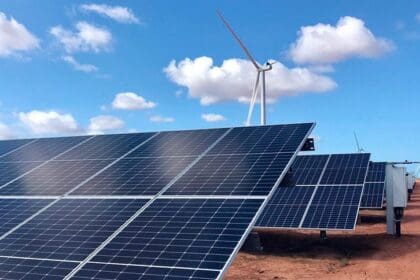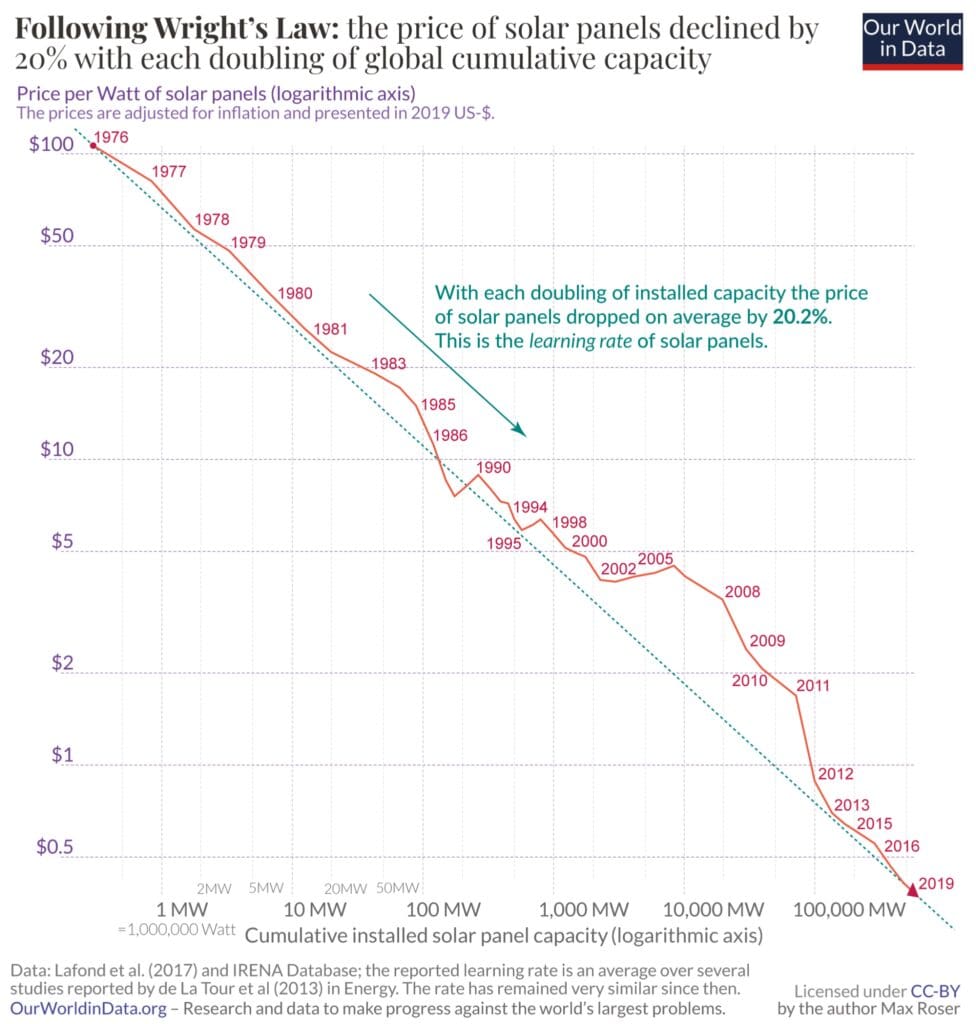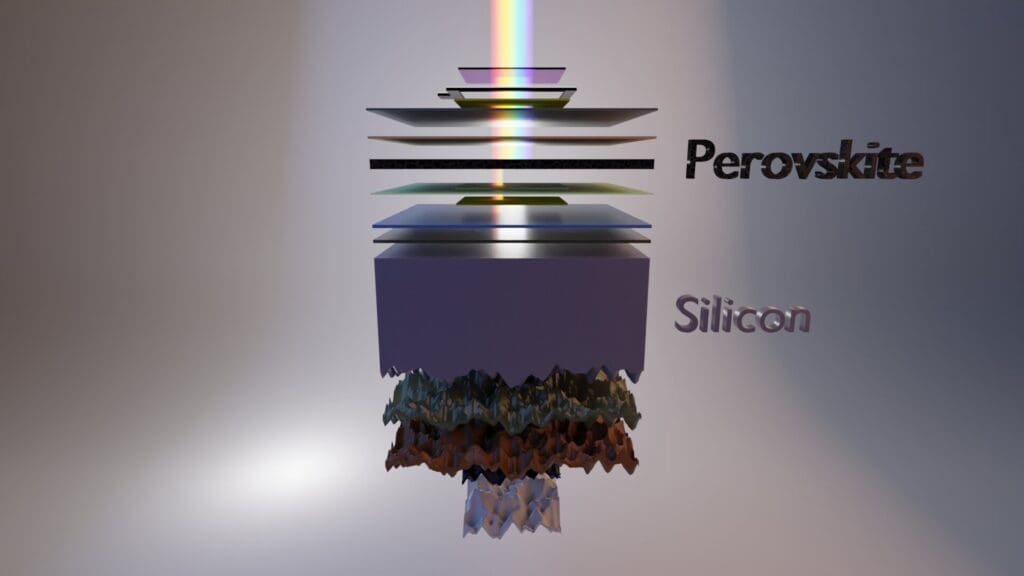
It also plays a significant role in developing economies, where villages not connected to a local grid can be electrified using directly connected solar panels.
Rapid advancement in technological developments will see even greater proliferation of PV with the emergence of innovations such as transparent solar, which can be deployed in windows, and further developments in direct integration into devices such as smartwatches, phones and laptops to extend battery life without having to connect a charger.
Briefly visiting the history of solar PV, we look at what these technological advancements and breakthroughs could look like and what the future holds for this versatile technology.
A brief history
Solar PV has come a long way since the first solar panel was invented in 1883 by Charles Fritts with a meagre efficiency of 1%. While the first viable commercial silicon solar cell was first used by Bell Labs in 1954 using the design Russel Ohl created and patented in 1939 and 1941 respectively and is found in many of today’s solar PV designs, we had to wait a while before the technology was meaningfully adopted.
The first meaningful use case for solar PV was ‘out of this world’ with the first commercial application being deployment on the Vanguard 1 satellite in 1958.
When US President Jimmy Carter installed solar panels on the roofs of the White House on the 20th of June 1979, it was regarded as a breakthrough for the technology. With the world starting to wake up to the threat of climate change and ecological damage his actions were primarily a political statement as the technology was still in its infancy with a low efficiency. But the intention was to demonstrate the arrival of an alternative to fossil fuels indicating that the creation of usable energy from the power of the sun was no longer an engineering idea, but a viable application making rapid progress.
It is believed the first grid-connected solar system was installed in the UK sometime around 1994. After this, it slowly started to pick up speed, but efficiency was still low and the economic case not that strong, partly because of the technology and partly because of the lower sun radiation the British Isles received compared to southern Europe and other warmer climates around the world. But over the course of the next decade, the solar PV industry experienced several technological breakthroughs such as efficiency gains and, combined with a rapid reduction in cost, the economic case became stronger. Various government subsidy schemes also contributed to solar PV’s growing popularity.
In 2010, pledging to lead the greenest government ever, Prime Minister David Cameron introduced the feed-in-tariff scheme which paid homeowners for installing solar panels on their houses and enabled them to sell excess electricity production back to the National Grid.
Solar PV in 2023
Today, around the globe as well as in the UK, solar PV is one of the most promising energy technologies around with huge scope for future growth and potential. There is a host of different panels to choose from with materials tailored to specific use case, environment and weather patterns. Today’s efficiency gains bear little resemblance to the humble beginnings of the technology with the newest designs delivering 22% to around 29%.
In conjunction with this improved output, advances in battery technology and mass production and utilisation, cost is continuing to fall with solar PV installation rates ‘going through the roof’ as a result. Increased demand delivers the incentive for further efficiency gains and prospects for the technology have never been better.
Despite the cost-of-living crisis, British households are installing more domestic solar than last year with, on average, more than 17,000 households installing solar panels every month so far this year.

The surge in solar PV explained
According to the International Renewable Energy Agency (IRENA), solar PV is the fastest-growing energy source having grown 26-fold since 2010. At the end of 2022, globally installed solar PV capacity was at 1,047GW. The amount added in 2022 alone was 191GW which indicates the rapid growth of this technology.
The IRENA research also highlighted the downward spiralling cost. Between 2020 and 2021, where the most recent data is available, the cost of newly commissioned utility-scale solar PV projects fell from $0.055/kWh to $0.048/kWh. This was driven by a 6% decline in this technology’s global weighted average total installed cost, from $916/kWh in 2020 to $857/kWh for the projects commissioned in 2021.
So how fast is it fair to assume the solar revolution will continue to grow? Data analysts have crunched the data based on how quickly the cost of solar PV has decreased and concluded it aligns with Wright’s Law. Technologies that follow Wright’s Law get cheaper at a consistent rate, as the cumulative production of that technology increases. For solar PV, with every doubling of capacity, the cost is reduced by 20%.
For instance, in 1976 with less than 0.5 MW of solar installed globally, the cost of 1 watt was $106, but with 1 MW installed in 1980, the cost had dropped to $30 per watt and in 2019 that was down well below $0.5.
The graph above shows the fascinating curve for added solar PV capacity and the correlation cost reduction.
Below we will take a look at some of the most promising advances in solar PV.
The solar PV material revolution
While silicon has long dominated solar PV, other more sustainable and efficient materials are now entering the field and creating a more diverse materials market.
Perovskite solar cells

Perovskite-based solar cells have gained attention due to their high conversion efficiency and low-cost production processes. Researchers are continually improving the stability, scalability, and durability of these cells, making them a promising alternative to traditional silicon-based PV cells.
Tandem solar cells
Tandem solar cells combine multiple semiconductors with different absorption properties to enhance overall efficiency. By stacking different materials in a single device, researchers have achieved efficiencies beyond the limits of individual materials. These cells are now being commercialised and have the potential to make solar even more cost-effective. For example, combining perovskite and silicon cells in a tandem structure has demonstrated exceptional efficiencies. By leveraging the high absorption of visible light by perovskite and the stability of silicon, scientists have achieved remarkable breakthroughs in conversion efficiency, pushing the limits of solar energy capture.
Transparent solar panels
Researchers have been working on developing transparent solar panels that can be integrated into windows and building facades. These panels allow sunlight to pass through while simultaneously converting it into electricity. With ongoing improvements, they have the potential to revolutionise building design by turning entire surfaces into energy-generating assets.
Coloured solar panels
Recently, research has focused on developing solar panels of different colours, enabling their integration into various architectural designs. This offers new possibilities for solar installations in residential and commercial settings where aesthetics is important.
Solar panel recycling
As the deployment of solar panels continues to grow, the need for efficient recycling processes has become vital. Scientists are working on improving recycling techniques to ensure the recovery and reuse of valuable materials, reducing waste and environmental impact.
Enhanced manufacturing techniques
New manufacturing methods, such as solution processing and 3D printing, are being explored to further reduce costs and increase production efficiency. These techniques enable the fabrication of solar cells on a wide range of flexible substrates, opening possibilities for novel applications like solar garments and portable solar devices.
Who is driving the solar revolution?
Solar PV has become a big business with recent decades seeing solar manufacturing companies transformed into large industrial players, traded on the world’s stock exchanges. In common with many manufacturing sectors, China is dominating. Of the top ten manufacturers in the world, six are Chinese companies.
China
With a market capitalisation of $31 billion, Longi Green Energy Technology is the world’s biggest and fastest-growing solar company in the world. Based in Xi’an, China it is estimated to produce 30GW of high-efficiency solar wafers and modules per year. These modules are monocrystalline and use either the PERC, the bifacial technology, or both. The current generation cells of LONGi Solar have 30-year reliability and their P-type PERC cells have an efficiency of 24.06%.
Another large Chinese brand, Jinko Solar is based in Shanghai, China. The company owns nine production facilities globally and has an annual capacity of 31GW for solar wafers, 19GW for solar cells, and 36GW for solar modules. The company has a core focus on Half-Cell technology, Bifacial technology, and Tiling Ribbon technology, with the latter developed by the company. Jinko Solar has a market capitalisation of $1.74 billion.
South Korea
South Korea’s Kyocera Corporation, another huge player, has manufactured solar panels for 45 years since it was founded in 1978. While the company has a market capitalisation of $18.41 billion it is not possible to determine how much of this is attributed to solar as it offers many other products ranging from technology to healthcare.
USA
First Solar is based in Tempe, Arizona, US. Founded in 2016, it has a market capitalisation of $21.81 billion making it the biggest player in North America. First Solar produces utility-scale solar modules often used in solar plants. The modules have a warranty of 25 years and use advanced Thin Film solar technology which has a higher temperature coefficient and lower degradation rate than conventional silicon-based solar modules.
Canada
Canadian Solar is also a big player in North America. Based in Guelph, Canada, and founded in 2001 the company has, over the course of the last 20 years, evolved into one of the global players in the solar industry with more than 63GW of solar modules shipped to over 160 countries globally. It enjoys a market capitalisation of $2.10 billion.
Europe & UK
While Europe cannot compete with the major producers in Asia and North America, both REC Group and SolarWorld are considered prominent solar panel manufacturers in Europe.
SolarWorld is headquartered in Germany and dedicated to the manufacture and marketing of photovoltaic products all over the world. REC Group, headquartered in Norway, is known for its extensive global presence and reputation for producing high-quality solar panels.
The solar industry in the UK primarily relies on imported solar panels, with many panels coming from established manufacturers in countries like China, South Korea, and Germany.
The UK’s solar industry is built around mid-sized companies who install solar panels both for residential use and commercial projects such as solar farms.
Solar PV breakthroughs
Efficiency
When talking about breakthroughs for solar PV, the first that comes to mind is efficiency gains with one of the biggest as recently as a few months ago, in July. Scientists achieved a significant breakthrough in solar panels efficiency using the exciting perovskite material described earlier.
By adding a layer of perovskite – another semiconductor – on top of the silicon layer the solar cells broke through the efficiency ceiling, passing the milestone of 30%. Perovskite captures blue light from the visible spectrum, while silicon captures red light, boosting the total light captured overall.
Location
Increased options for locating solar PV can also be regarded as a breakthrough. Until recently only wind power was seen as suitable renewable tech for offshore, but there are now several floating solar farms installed around the world opening the possibility of utilising the vast space of the ocean surface rather than land that could be needed for other purposes.
Combined tech
Combining solar PV and wind power can deliver a more consistent supply of renewable energy.
Several companies are now experimenting with this including Spanish energy giant Iberdrola which has started the commissioning in Australia of a wind-solar hybrid project.
Taking this to the next level, a project developed by the fossil fuel giant Royal Dutch Shell will see a combined offshore wind and solar farm built off the Netherlands.
Solar and storage
With the revolution in battery technology, combining solar PV with a giant battery would really take the use case of solar PV to the next level. Developed by Matrix Renewables, the launch of Rocío 1, 2 and 3 solar plants located in Andalusia, Spain will be the first project in Spain to feature a co-located battery storage system and is one of the earliest battery storage projects in the country.
Solar PV UK and global pipeline and prospects
There’s no doubt that the trajectory is one in which solar will continue its growth both abroad and in the UK. But that growth will not be linear – there will be peaks and dips.
The current cost-of-living crisis coupled with Brexit implications are, in the short-term, harming solar in the UK. With energy bills soaring due to the spike in gas prices and households cutting cost, installing solar will not be the top priority for many.
With UK solar companies largely reliant on imported panels, the UK solar industry will be pushing government for deals with both the EU and further afield so that import and export tariffs do not make solar more expensive in the UK.
There are concerns about global supply chains and the impact of the battle being waged between the US and China, the world’s leading solar material producers.
The tightening of tariffs on China by the Biden Administration is doing little to lessen dependence on China and doing little to help the market. In 2023 alone, China will install more new solar capacity than the US has deployed since Americans bought their first panels in the early 1970s – a seemingly unshakeable dominance.
There are other influences to consider, such as the availability of rare earth minerals, a critical element in not only solar panels but also wind turbines, electric vehicles, mobile phones, flatscreens and much more.
As considered earlier, a move away from silicon as the core material for solar panels will shake up the materials and rarer earth elements required. Predominantly mined in China (97% of the global rare earth element supply is mined in China) and African countries, there are also known resources in the US, with recent discoveries in both and Greenland.
The outlook
Deployment, innovation and technology are only going in one direction and that is more and more capacity, increased efficiency, cheaper production and technological advancements delivering more sustainable materials.
The sector will continue to move forward, the only question is, at what speed?



